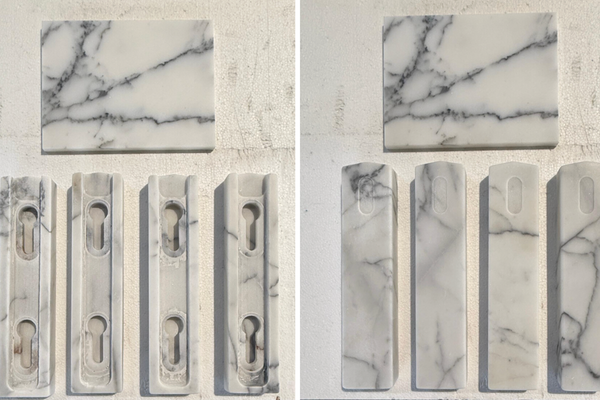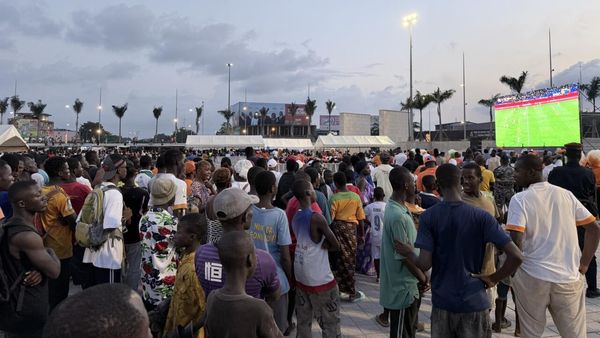
As Donald Trump became the first sitting U.S. president to cross into North Korea at 3:45 p.m. local time on Sunday, the man walking next to him, Kim Jong Un, grinned and applauded. That should have been no surprise: Trump had just delivered to the North Korean leader a degree of global recognition and acceptance that Kim’s father and grandfather could not have imagined.
The question is what Trump might get in return. As he heads into his 2020 reelection campaign, the president is aware that he needs to make good on years of braggadocio about his deal-making skills. On Saturday, he restarted the faltering U.S.-China trade talks in a meeting with Chinese President Xi Jinping at the G-20 summit in Japan. Later that same day, almost as if he were dropping in on an old friend in town—“Great friendships have been made,” Trump said afterward—he tweeted a casual plea to Kim to meet him at the treaty village of Panmunjom, a concertina-wired focus of high tensions since the Korean War paused there 66 years ago. Kim showed up, Mao suit and all, looking a bit baffled but game.
Plainly, Trump wants things to happen: After all, he was risking humiliation if Kim didn’t respond to his very public request. (In normal diplomacy, a secret back channel would have been employed so that the president didn’t risk losing face.) In 2016, Trump promised the American electorate: “We’re going to win so much, you’re going to be so sick and tired of winning.” But after a dramatic set-up in Singapore a year ago, the Trump-Kim relationship hasn’t produced anything resembling a nuclear deal. The China relationship is still stuck two and a half years after Trump pulled out of the Trans-Pacific Partnership (TPP), suggesting that he could do a better job changing Beijing’s behavior, and Trump’s replacement for the North American Free Trade Agreement doesn’t look likely to pass Congress this year, if at all. Nor is there much progress on trade talks with Japan.
As he has said repeatedly about China and Iran, Trump declared again over the weekend that he’s not in any hurry for a deal with North Korea. “If you’re in a rush, you get yourself in trouble,” he said during a news conference with South Korean President Moon Jae-in before his visit to the Demilitarized Zone on Sunday. “Speed is not the object.” Trump announced the two sides were setting up new teams to pursue a “comprehensive” deal.
But the inaugural Democratic presidential debates this past week were a reminder that Trump may have less time than he’s letting on. His consistently low approval ratings suggest he may have an uphill climb to winning a second term, and he’s going to need some baubles to dangle before voters. Trump’s friendly one-two outreach to Xi and Kim suggested that perhaps he’s starting to understand the complex dynamics of East Asia a little better: Beijing is Kim’s lifeline, accounting for more than 90 percent of North Korea’s trade, and Trump probably needs Xi to get to a deal with Kim. Yet in the face of two years of hostility with Washington, Xi has shown little inclination to place any pressure on Kim to denuclearize and in fact has at times helped Kim skirt U.S. and U.N. sanctions.
What is undeniable is that Trump is taking a brand-new approach to North Korea. Since the fall of 2017, when he mocked Kim as “Little Rocket Man” and promised to “totally destroy” North Korea if it didn’t stop developing a nuclear intercontinental ballistic missile threat to U.S. shores, and Pyongyang responded by calling him a “mentally deranged U.S. dotard,” Trump and Kim have been making up like an estranged couple on a second honeymoon. And while he has achieved little more than a pledge from Pyongyang to suspend nuclear and long-range missile testing—Kim, frustrated after the failed Hanoi summit in February, recently fired off some short-range rockets—Trump was probably right to say that previous U.S. efforts at negotiation have only driven the North deeper into nuclear paranoia.
It’s ironic, of course, that Trump is now going all-out to woo Kim, since in 2017 Trump was the one dismissing the utility of talks. In the fall of that year, Trump publicly slapped down his then-secretary of state, Rex Tillerson, tweeting that he was “wasting his time” trying to talk to North Korea about its nuclear and missile program. “Being nice to Rocket Man hasn’t worked in 25 years, why would it work now? Clinton failed, Bush failed, and Obama failed,” Trump said.
Indeed, nearly a quarter century of negotiations by both Republican and Democratic administrations with Kim and his father, Kim Jong Il—during which North Korea used its nuclear program as a bargaining chip to gain Western aid—had yielded almost no progress.
But Kim Jong Un may have been shaken by being taken to the brink of war, and in early 2018 he began his own outreach to South Korea. Trump also reversed course, perhaps betting that an appeal to Kim’s vanity might be the way to break the logjam. For years, the Kim regime has craved from Washington just the kind of global recognition that Trump has freely granted since Singapore. At that summit, Trump met Kim as a peer, standing with him before an array of American and North Korean flags, and the White House produced a video portraying the two leaders as men of destiny and telling Kim that if he denuclearizes he can make his country rich.
The cherubic North Korean leader, who has also sought to make economic reforms, praised Trump’s courage on Sunday. “I believe this is an expression of his willingness to eliminate all the unfortunate past and open a new future,” he said.
Most experts believe that Pyongyang will never surrender its nuclear program while it remains under threat from Washington and Seoul. It probably won’t give up all that much now, though Kim has already offered up half a loaf, including the dismantling of his Yongbyon nuclear facility. It is noteworthy that Trump on Sunday designated Stephen Biegun as the lead U.S. negotiator on the renewed talks; Biegun has in the past favored a more phased approach than National Security Advisor John Bolton and other hawks.
Even so, this month Biegun declared the talks to be in a “holding pattern” because the two sides have still not arrived at a shared definition of the key term in their initial agreement to go forward: “denuclearization.” Pyongyang has historically interpreted “complete denuclearization of the Korean Peninsula” to also mean concessions by the United States, including withdrawal of thousands of U.S. troops garrisoning in South Korea.
Some North Korea nuclear experts, such as Siegfried Hecker, the former director of the Los Alamos National Laboratory and one of the preeminent authorities on Pyongyang’s nuclear program, believe that Trump’s new approach can still work, especially if he accepts a partial deal. The gravest danger remaining is a nuclear-armed, long-range missile, which Pyongyang needs to perfect through further testing. That makes the current limit on missile testing supremely important.
“The impact the no testing has had so far on significantly slowing the North’s nuclear program has not been appreciated,” Hecker told Foreign Policy earlier this year.
But as reelection time rolls around, the U.S. president may be calculating that he needs more than a mere pause. He needs a victory.







